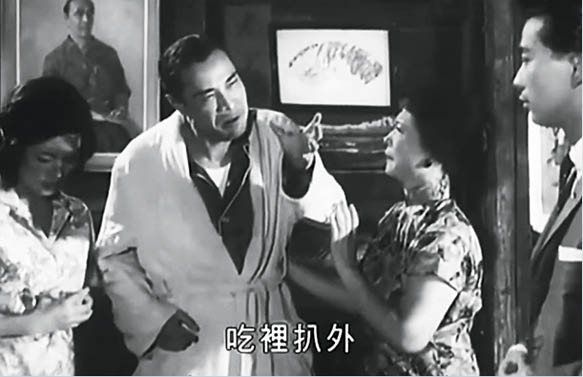Berlioz
Symphonie fantastique and
Lélio together, as they should be, with François-Xavier Roth and Les Siècles livestreamed from the Philharmonie de Paris (link here). Though
Symphonie fantastique is heard everywhere, all the time, it makes a difference when paired with
Lélio because this restores Berlioz's original context. Opus 14 and 14b are meant to connect. Indeed,
Lélio can be heard as an extension of the
Symphonie fantastique, since together they reflect an intensely creative period in his development. The symphony, subtitled
Épisode de la vie d'un artiste ... en cinq parties flows naturally into the
Lélio, ou Le retour à la vie, mélologue en six parties. The first part addresses annihilation, the second part revival through creative art, and, heard together, they have symmetry.
When the symphony isn't treated as a stand-alone, there is an impact on interpretation. Roth and Les Siècles use instruments of Berlioz's period to better reflect the colours Berlioz would have used. This gives a more naturalistic, genuinely "Romantic"(big R) warmth to the performance. In "Rêveries", diaphanous textures herald the idée fixe, which here flowed with ardent purpose, establishing the dichotomy between poetic ideals and obsession that gives this symphony such power. Four harps and shimmering strings introduce the waltz. This moment of serenity contrasted with darker timbres, might indicate that happiness may be elusive. The "Scène aux champs" is pastoral, but haunted by more poignant undercurrents. An exquisitely played cor anglais, echoed by unseen oboe : dichotomy again, suggesting that happiness might be beyond reach. Thus the "March au supplice" grows from what has gone before. The steady march is well defined, the Idée fixe leading waywardly forth. An atmospheric "Songe d'une nuit du sabbat". Ophecliedes may reference funeral processions in Berlioz's era, but the ominous grotesques, swirling strings and ringing bells also indicate supernatural malevolence. The demonic forces of Goethe's
Die erste Walpurgisnacht are not so very far away. Romanticism, with its instincts for what we'd now call the subconscious, marked a breaking away from the unquestioned order of the Ancien Regime.
Roth's observant approach to structure pulls together the underlying architecture in the Symphonie fantastique, which is particularly relevant when the symphony is heard together with
Lélio. Significantly,
the narrator (Michel Fau) is alone as Lélio begins, the orchestra silent. This is an existential cry of anguish., delivered by Michel Fau with appropriate drama, even capturing the semi-musical cadences in the text. For Berlioz, the narration was fundamental to concept. Declamation would have come naturally to Berlioz and his contemporaries, who discovered Shakespeare, albeit in the theatrical adaptations that were then the norm, even in England. Moreover, a good narrator like Michel Fau captures the semi-musical cadences in the text, which further links words with music . Lélio is, significantly, a composer. While this is not Sprechstimme by any means, leaving out the narration, or using performances without the distinctive punch of proper French diction, diminishes the impact. "
Dieu! je vis encore... Il est donc vrai, la vie comme un serpent s’est glissée dans mon cœur pour le déchirer de nouveau? " This is an existential cry of anguish. Yet there are explicit references to the symphony. "
Ce supplice, ces juges, ces bourreaux, ces soldats, les clameurs de cette populace, ces pas graves et cadencés tombant sur mon cœur comme des marteaux de Cyclopes.." In this dark night of the soul, Lélio speaks of the vision "
avec son inexplicable sourire, conduisant la ronde infernale autour de mon tombeau!..."
The narration is so closely integrated into the structure that, in the "Ballad of the Fisherman" (based on Goethe's adaptation of
Hamlet), Lélio's friend, Horatio (Michael Spyres) sings a lilting song about a nymph while Lélio meditates on life and art. The serene song connects to evoke the watlz in the
Symphonie fantastique. Again, the text references music : "
Une instrumentation sourde... une harmonie large et sinistre... une lugubre mélodie... un chœur en unissons et octaves... semblable à une grande voix exhalant une plainte menaçante pendant la mystérieuse solennité de la nuit..." In the Chœur d’ombres, the choir (the National Youth Choir of Scotland, chorus master Christopher Bell) sings of death, punctuated by pounding drums - another funeral march, all the more poignant because the voices are fresh and youthful. Yet Lélio's words are truculent. Calling on Shakespeare, he resolves to head to Naples and join brigands. In Romantic terms, the South represented freedom and wildneess, the sun versus the moon, images Goethe employed so well. An artist cannot conform but must find himself through creativity. In the "Chanson de Brigands" the baritone (Florian Sempey) leads the chorus in raucous adventure. On the video transmission, the chorus members put their arms round each others shoulders and move, expressing the energy in the orchestra. Can Lélio dare hope ? "
Je me vois dans l’avenir, couronné par l’amour".
After a brief silence, the orchestra now comes into its own : beautifully limpid harps, seductive woodwinds. Now the tenor represents Lélio, singing the imaginary voice of the composer, off-stage. then even Lélio falls silent, as the orchestra creates the magic that is "Sounenirs- La harpe éolienne" where the orchestra extends the sound of the harp with winds and strings, evoking the sound of an aeolian harp, where Nature plays, vibrating through breezes. The pastoralism of "Scène aux champs" now idealized and perfect. Lélio resolves to find new life through art. "
Allons! que les esprits chantent et folâtrent! que la tempête gronde, éclate et tonne!......SHAKESPEARE me protège!". The "Fantaisie sur " La tempête " de Shakespeare" is Lélio's redemption. The chorus sing"Miranda! Miranda", and the orchestra creates the storm - both physical and supernatural - that drives her to the island where Caliban is marooned. The pounding rhythms of the idée fixe in the
Symphonie fantastique return, transformed, flowing with even greater energy. Until this point, Berlioz employed the orchestra with restraint. Now, in this exhilarating climax, we hear why he needed a full ensemble, supported by choir. Lélio listens, and cries "Encore! Encore, et pour toujours!...".
Roth, Les Siècles and the voices give such an idiomatic, inspired performance that Lélio's words seem addressed to them "
votre exécution est remarquable par la précision, l’ensemble, la chaleur; vous avez même reproduit plusieurs nuances fort délicates. Vos progrès sont manifestes; je vois que vous pouvez aborder maintenant des compositions d’un ordre beaucoup plus élevé que cette faible esquisse."
When (not if) this gets to CD/video, it should set a new benchmark in Berlioz performance practice. til then,
listen again on the Philharmonie de Paris website.











